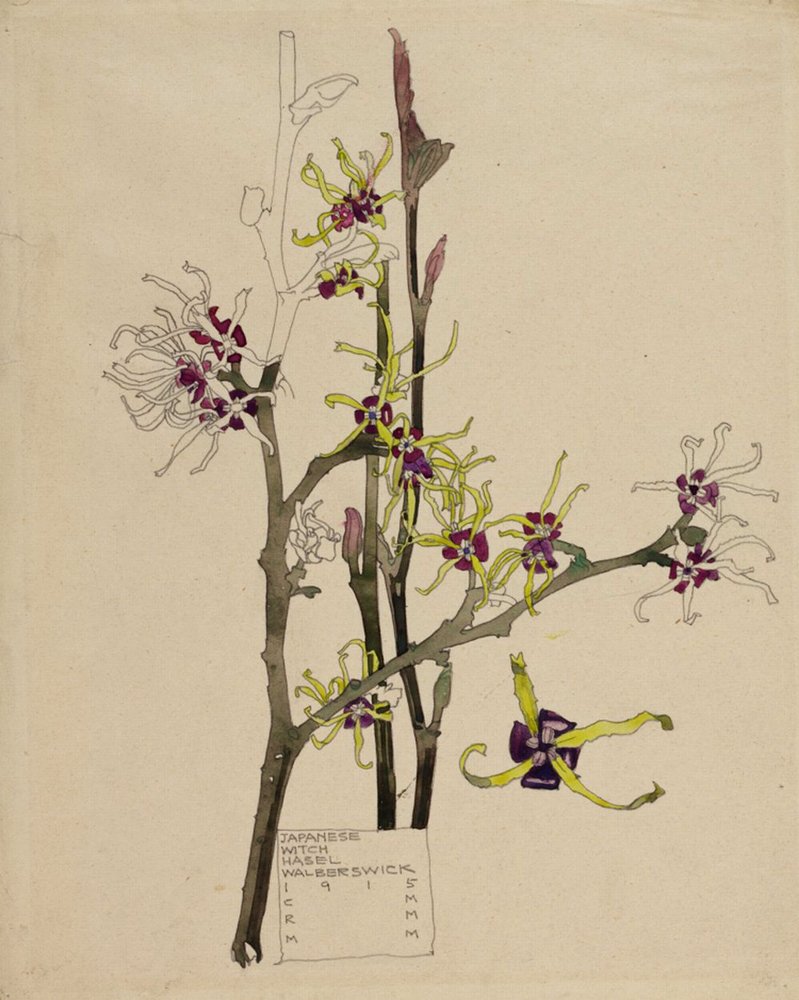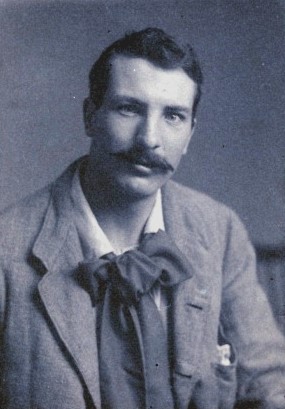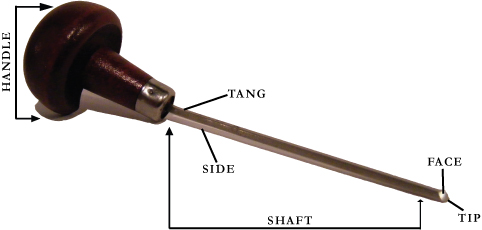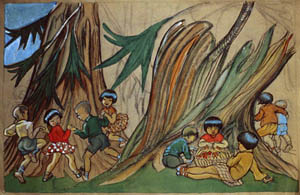|
Katharine Cameron
Katharine Cameron RWS RE (26 February 1874 – 1965) was a Scottish artist, watercolourist, and printmaker, best known for her paintings and etchings of flowers. She was associated with the group of artists known as the Glasgow Girls. Early life and education Born in Hillhead, Glasgow, she was the daughter of the Rev. Robert Cameron and the sister of the artist David Young Cameron. She studied at the Glasgow School of Art, from 1889 to 1893 where she became associated with a small circle of female students who called themselves 'The Immortals'. The group included the sisters Frances and Margaret Macdonald, Janet Aitken, Agnes Raeburn, Jessie Keppie, John Keppie, Herbet McNair, and Charles Rennie Mackintosh. During her time at the Glasgow School of Art she contributed illustrations for The Yellow Book and the student publication The Magazine. Around 1902 she travelled to France and enrolled at the Atelier Colarossi, studying under Gustave Courtois. Book Illustrator O ... [...More Info...] [...Related Items...] OR: [Wikipedia] [Google] [Baidu] |
Margaret Macdonald Mackintosh
Margaret Macdonald Mackintosh (5 November 1864 – 7 January 1933) was an English-born artist who worked in Scotland, and whose design work became one of the defining features of the Glasgow Style during the 1890s - 1900s. Biography Born Margaret Macdonald, at Tipton, Staffordshire between Birmingham and Wolverhampton, her father was a colliery manager and engineer. Margaret and her younger sister Frances both attended the Orme Girls' School, Newcastle-under-Lyme, Staffordshire; their names are recorded in the school register. In the 1881 census Margaret, aged 16, was a visitor at someone else's house on census night and was listed as a scholar. By 1890 the family had settled in Glasgow and Margaret and her sister, Frances Macdonald, enrolled as day students at the Glasgow School of Art studying courses in design. There, she worked with a variety of media, including metalwork, embroidery, and textiles. She began collaborating with her sister Frances, and in 1896 the pair worked ... [...More Info...] [...Related Items...] OR: [Wikipedia] [Google] [Baidu] |
Herbert MacNair
James Herbert MacNair (23 December 1868 – 22 April 1955), was a Scottish artist, designer and teacher whose work contributed to the development of the Modern Style (British Art Nouveau style) during the 1890s. Early life Born in Glasgow into a military family, MacNair trained as an architect with the Glasgow firm of Honeyman and Keppie from 1888 to 1895, and it was there that he first met Charles Rennie Mackintosh. As part of their training, the two attended evening classes at the Glasgow School of Art between 1888 and 1894, and it was there that they met the MacDonald sisters, Margaret and Frances. MacNair would go on to marry Frances, and Mackintosh would marry Margaret. The Four All four later became the loose collective of the Glasgow School known as "The Four", MacNair being the least well known. [...More Info...] [...Related Items...] OR: [Wikipedia] [Google] [Baidu] |
Burin (engraving)
A burin ( ) is a steel cutting tool used in engraving, from the French ''burin'' (cold chisel). Its older English name and synonym is graver. Etymology The term ''burin'' refers to a tool used by engravers that has a thin, pointed blade and it used to etch or cut. The first known use of the word dates back to France in the mid-1600s when the term was coined for the tool we know today. Design The burin consists of a rounded handle shaped like a mushroom, and a tempered steel shaft, coming from the handle at an angle, and ending in a very sharp cutting face. The most ubiquitous types have a square or lozenge face, a high-end repertoire has many others. A tint burin consists of a square face with teeth, to create many fine, closely spaced lines. A stipple tool allows for the creation of fine dots. A flat burin consists of a rectangular face, and is used for cutting away large portions of material at a time. The earliest uses of a burin come from the Lower Paleolithic era, t ... [...More Info...] [...Related Items...] OR: [Wikipedia] [Google] [Baidu] |
Etching
Etching is traditionally the process of using strong acid or mordant to cut into the unprotected parts of a metal surface to create a design in intaglio (incised) in the metal. In modern manufacturing, other chemicals may be used on other types of material. As a method of printmaking, it is, along with engraving, the most important technique for old master prints, and remains in wide use today. In a number of modern variants such as microfabrication etching and photochemical milling it is a crucial technique in much modern technology, including circuit boards. In traditional pure etching, a metal plate (usually of copper, zinc or steel) is covered with a waxy ground which is resistant to acid. The artist then scratches off the ground with a pointed etching needle where the artist wants a line to appear in the finished piece, exposing the bare metal. The échoppe, a tool with a slanted oval section, is also used for "swelling" lines. The plate is then dipped in a bath of aci ... [...More Info...] [...Related Items...] OR: [Wikipedia] [Google] [Baidu] |
Olive Biller
Olive Allen Biller, an artist and illustrator, was born in Ormskirk, Lancashire on 17 October 1879 and died on 15 October 1957 in Vancouver, British Columbia, Canada. She published illustrations under her maiden name Olive Allen and her married name Olive Allen Biller. Career Biller initially studied design, illustration, and various arts and crafts at the School of Architecture and Applied Art at University College, Liverpool (now known as University of Liverpool School of Architecture), commencing October 1898. There, she was taught by Robert Anning Bell, and was particularly mentored by Herbert MacNair. In 1900, After a brief time at the Lambeth School of Art, London, she attended the Slade School of Art, London. She studied most notably with Henry Tonks of whom she made a satirical drawing (now in the collection of the Strang, University College London). From 1901, as Olive Allen, she was an illustrator of magazines, children's books and Christmas annuals, chiefly for publisher ... [...More Info...] [...Related Items...] OR: [Wikipedia] [Google] [Baidu] |
Phoebe Anna Traquair
Phoebe Anna Traquair (; 24 May 1852 – 4 August 1936) was an Irish-born artist, who achieved international recognition for her role in the Arts and Crafts movement in Scotland, as an illustrator, painter and embroiderer. Her works included large-scale murals, embroidery, enamel jewellery and book illuminations. In 1920, she was elected as an honorary member of the Royal Scottish Academy. Family life Phoebe Traquair was born Phoebe Anna Moss on 24 May 1852 in Kilternan, County Dublin. Her parents were physician Dr William Moss and Teresa Moss (née Richardson). Phoebe was the sixth of their seven children. Traquair studied art at the School of Design of the Royal Dublin Society between 1869 and 1872. She married the Scottish palaeontologist Ramsay Heatley Traquair on 5 June 1873. The couple moved to Colinton Farm in the south-west of Edinburgh in spring 1874. [...More Info...] [...Related Items...] OR: [Wikipedia] [Google] [Baidu] |
James Abbott McNeill Whistler
James Abbott McNeill Whistler (; July 10, 1834July 17, 1903) was an American painter active during the American Gilded Age and based primarily in the United Kingdom. He eschewed sentimentality and moral allusion in painting and was a leading proponent of the credo "art for art's sake". His signature for his paintings took the shape of a stylized butterfly possessing a long stinger for a tail. The symbol combined both aspects of his personality: his art is marked by a subtle delicacy, while his public persona was combative. He found a parallel between painting and music, and entitled many of his paintings "arrangements", "harmonies", and "nocturnes", emphasizing the primacy of tonal harmony. His most famous painting, ''Arrangement in Grey and Black No. 1'' (1871), commonly known as ''Whistler's Mother'', is a revered and often parodied portrait of motherhood. Whistler influenced the art world and the broader culture of his time with his theories and his friendships with other lea ... [...More Info...] [...Related Items...] OR: [Wikipedia] [Google] [Baidu] |
Japonisme
''Japonisme'' is a French term that refers to the popularity and influence of Japanese art and design among a number of Western European artists in the nineteenth century following the forced reopening of foreign trade with Japan in 1858. Japonisme was first described by French art critic and collector Philippe Burty in 1872. While the effects of the trend were likely most pronounced in the visual arts, they extended to architecture, landscaping and gardening, and clothing. Even the performing arts were affected; Gilbert & Sullivan's ''The Mikado'' is perhaps the best example. From the 1860s, ''ukiyo-e,'' Japanese woodblock prints, became a source of inspiration for many Western artists. These prints were created for the commercial market in Japan. Although a percentage of prints were brought to the West through Dutch trade merchants, it was not until the 1860s that ukiyo-e prints gained popularity in Europe. Western artists were intrigued by the original use of color and com ... [...More Info...] [...Related Items...] OR: [Wikipedia] [Google] [Baidu] |
Celtic Revival
The Celtic Revival (also referred to as the Celtic Twilight) is a variety of movements and trends in the 19th, 20th and 21st centuries that see a renewed interest in aspects of Celtic culture. Artists and writers drew on the traditions of Gaelic literature, Welsh-language literature, and so-called 'Celtic art'—what historians call Insular art (the Early Medieval style of Ireland and Britain). Although the revival was complex and multifaceted, occurring across many fields and in various countries in Northwest Europe, its best known incarnation is probably the Irish Literary Revival. Irish writers including William Butler Yeats, Lady Gregory, "AE" Russell, Edward Martyn, Alice Milligan and Edward Plunkett (Lord Dunsany) stimulated a new appreciation of traditional Irish literature and Irish poetry in the late 19th and early 20th century. In aspects the revival came to represent a reaction to modernisation. This is particularly true in Ireland, where the relationship betwee ... [...More Info...] [...Related Items...] OR: [Wikipedia] [Google] [Baidu] |
Art Nouveau
Art Nouveau (; ) is an international style of art, architecture, and applied art, especially the decorative arts. The style is known by different names in different languages: in German, in Italian, in Catalan, and also known as the Modern Style (British Art Nouveau style), Modern Style in English. It was popular between 1890 and 1910 during the Belle Époque period, and was a reaction against the academic art, eclecticism and historicism of 19th century architecture and decoration. It was often inspired by natural forms such as the sinuous curves of plants and flowers. Other characteristics of Art Nouveau were a sense of dynamism and movement, often given by asymmetry or whiplash lines, and the use of modern materials, particularly iron, glass, ceramics and later concrete, to create unusual forms and larger open spaces.Sembach, Klaus-Jürgen, ''L'Art Nouveau'' (2013), pp. 8–30 One major objective of Art Nouveau was to break down the traditional distinction between fine ... [...More Info...] [...Related Items...] OR: [Wikipedia] [Google] [Baidu] |
Modern Style (British Art Nouveau Style)
The Modern Style is a style of architecture, art, and design that first emerged in the United Kingdom of Great Britain and Ireland, United Kingdom in the mid-1880s. It is the first Art Nouveau style worldwide, and it represents the evolution of the Arts and Crafts movement which was native to Great Britain. Britain not only provided the base and intellectual background for the Art Nouveau movement, which was adapted by other countries to give birth to local variants; they also played an over-sized role in its dissemination and cultivation through the ''Liberty (department store), Liberty'' department store and ''The Studio (magazine), The Studio'' magazine. The most important person in the field of design in general and architecture in particular, was Charles Rennie Mackintosh. He created one of the key motifs of the movement, now known as the 'Mackintosh rose' or 'Glasgow rose'. The Glasgow School was also of tremendous importance, particularly due to a group closely associated wit ... [...More Info...] [...Related Items...] OR: [Wikipedia] [Google] [Baidu] |








